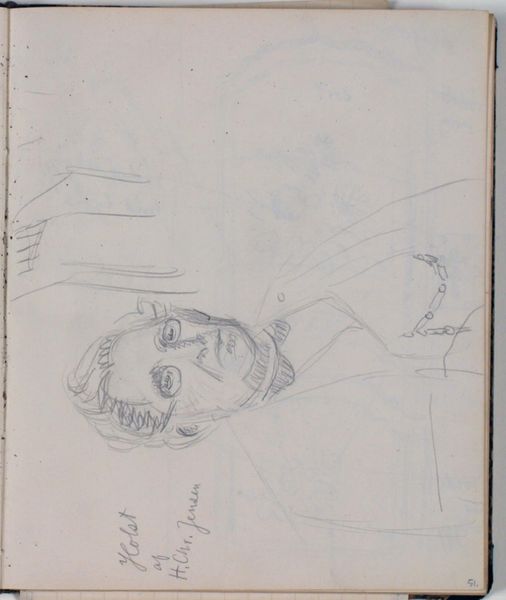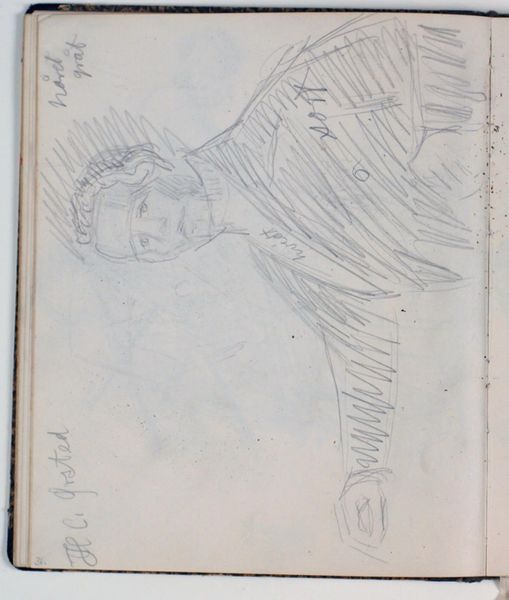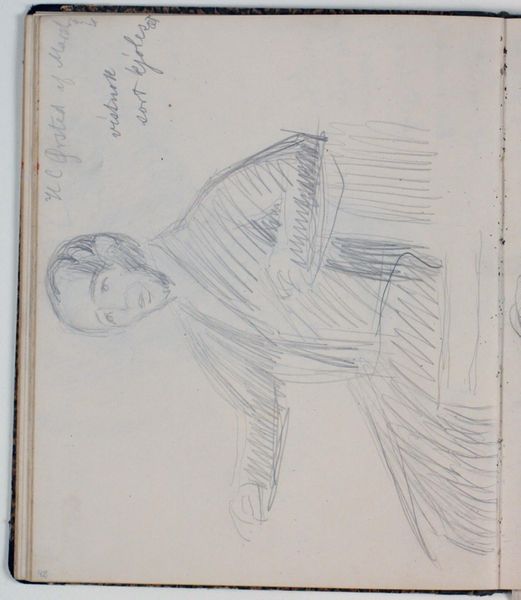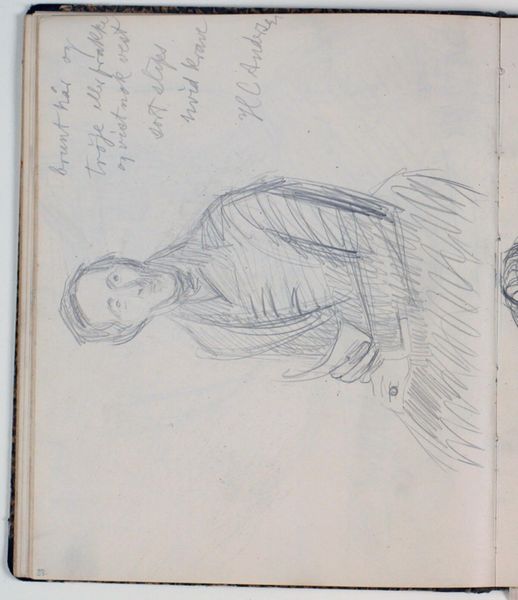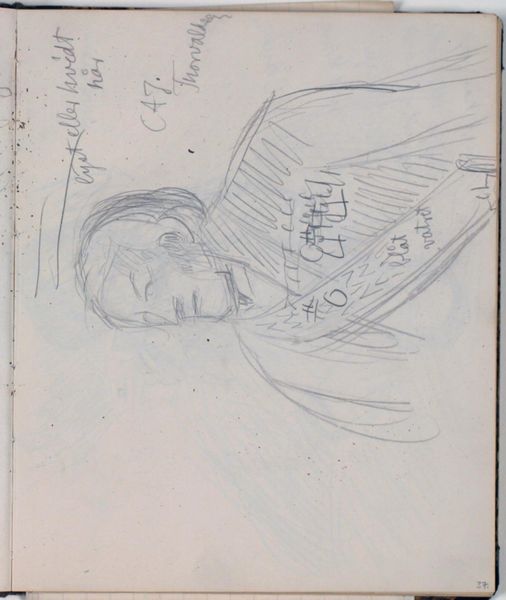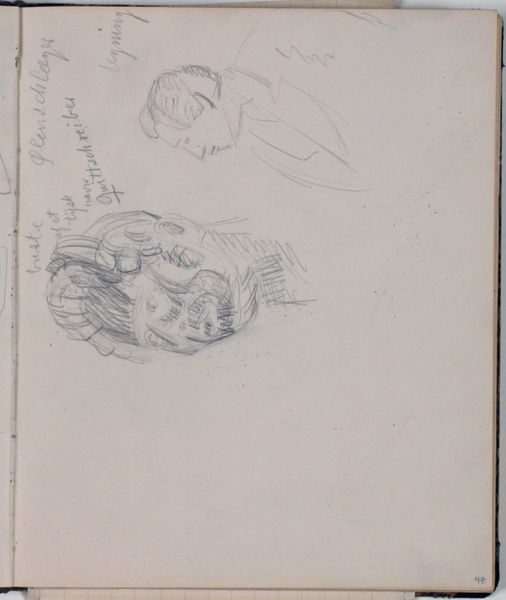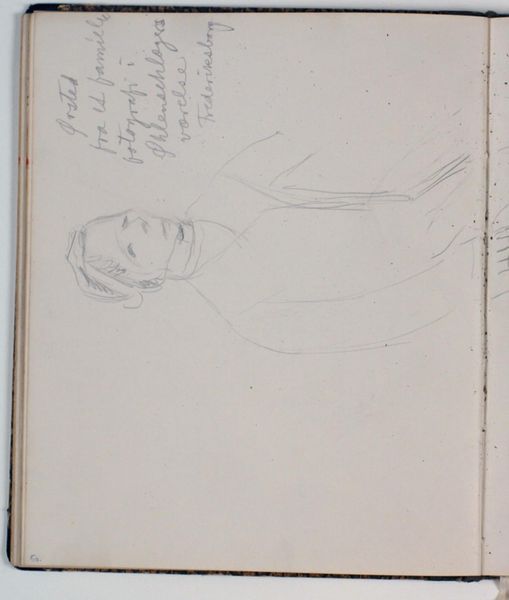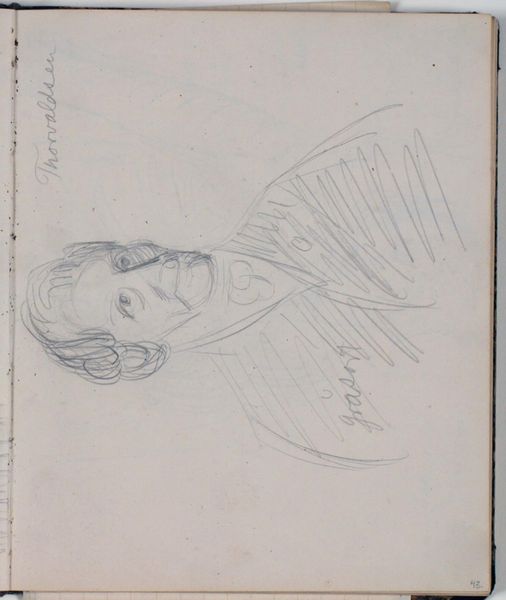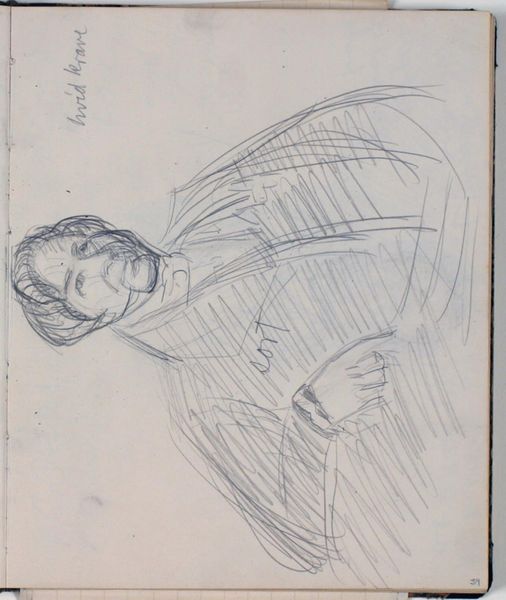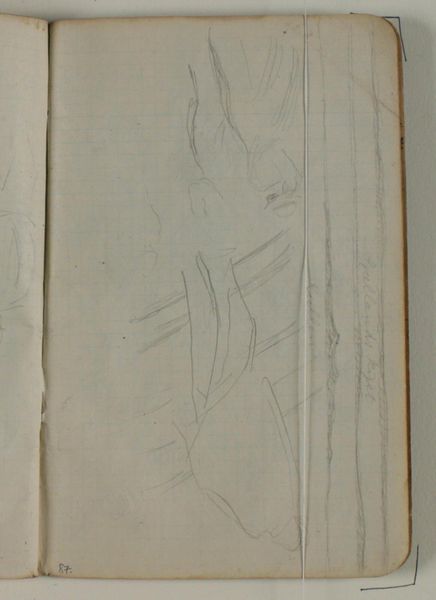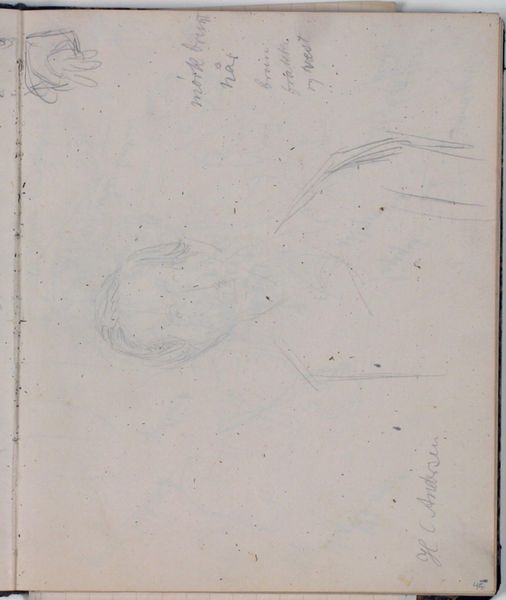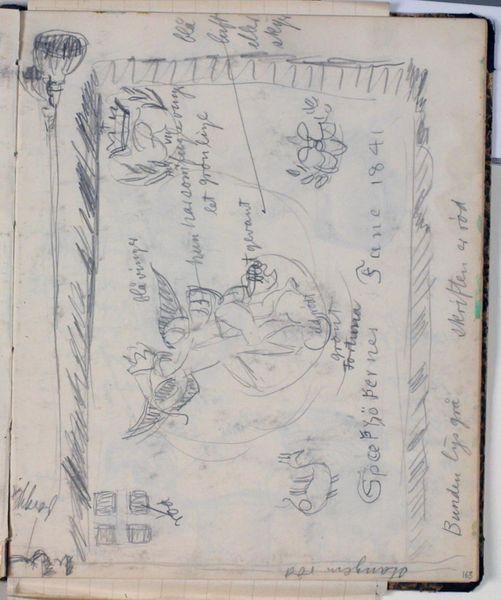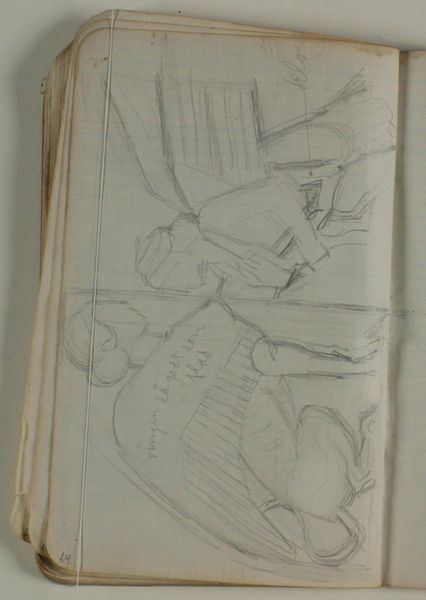
Studie af H. C. Andersen efter maleri på Frederiksborg af Alb. Küchler 1834 1930 - 1936
0:00
0:00
drawing, pencil
#
portrait
#
drawing
#
figuration
#
pencil
Dimensions: 226 mm (height) x 185 mm (width) x 112 mm (depth) (monteringsmaal), 221 mm (height) x 184 mm (width) (bladmaal)
Editor: Here we have Niels Larsen Stevns' "Studie af H. C. Andersen efter maleri p\u00e5 Frederiksborg af Alb. K\u00fcchler 1834," a pencil drawing created sometime between 1930 and 1936. It looks like a study or a quick sketch. What strikes you most about this work? Curator: What I find most compelling is understanding this drawing in relation to its means of production. It’s not just a portrait, but a copy of a portrait. How does the artist's labor reflect on, or perhaps alter, Küchler's original intent? What new meanings emerge in Stevns’ hand-drawn rendition? Editor: That's interesting! I hadn’t considered it as a work of labor. I suppose the choice of pencil, being such a readily available and reproducible tool, also informs that idea of labor. Do you see a relationship between the drawing's inherent reproducibility and its status as art? Curator: Precisely. And consider the paper – it looks like it's in a sketchbook. How does this context—this everyday material—impact our understanding? Is this drawing intended for display or personal use? Does that impact its value? Editor: So, it's almost as if the materials and the process are as important as the subject, Hans Christian Andersen himself? The fact that it's in a sketchbook suggests a less formal intention, more like a working document. Curator: Absolutely. The choice of a pencil and the existence of a sketchbook emphasize the act of replication, almost blurring lines between craft, study, and "high" art. How is value ascribed, given the relatively commonplace materials? How is the making process central to the artwork’s essence? Editor: That gives me a lot to consider about not only the context in which it was made, but also how we view artistic intention, especially when the work replicates someone else’s art. Curator: Indeed. This simple drawing prompts complex questions about artistic creation, value, and labor in art history. A testament to the power of materiality.
Comments
No comments
Be the first to comment and join the conversation on the ultimate creative platform.

